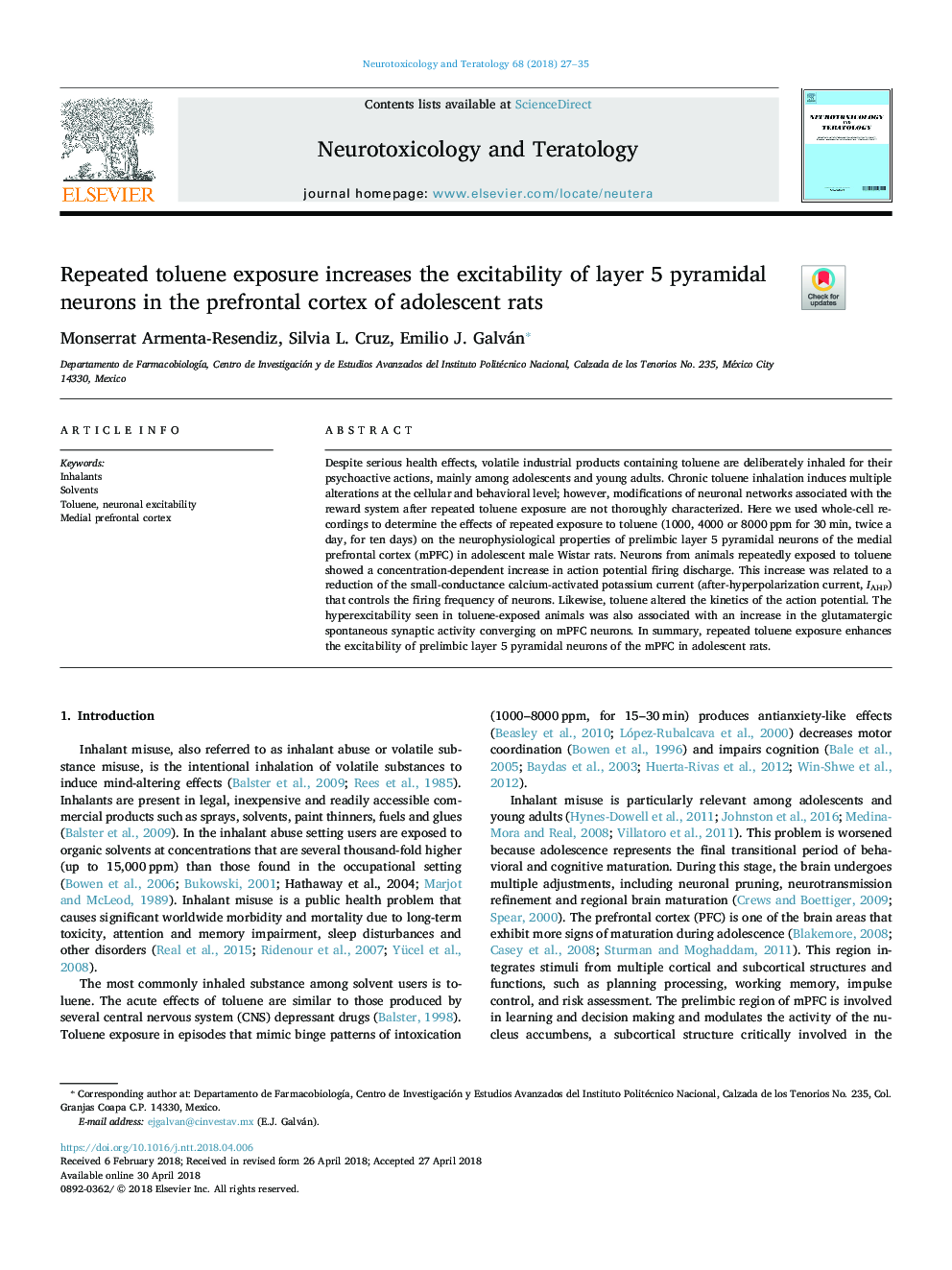| Article ID | Journal | Published Year | Pages | File Type |
|---|---|---|---|---|
| 8550552 | Neurotoxicology and Teratology | 2018 | 9 Pages |
Abstract
Despite serious health effects, volatile industrial products containing toluene are deliberately inhaled for their psychoactive actions, mainly among adolescents and young adults. Chronic toluene inhalation induces multiple alterations at the cellular and behavioral level; however, modifications of neuronal networks associated with the reward system after repeated toluene exposure are not thoroughly characterized. Here we used whole-cell recordings to determine the effects of repeated exposure to toluene (1000, 4000 or 8000â¯ppm for 30â¯min, twice a day, for ten days) on the neurophysiological properties of prelimbic layer 5 pyramidal neurons of the medial prefrontal cortex (mPFC) in adolescent male Wistar rats. Neurons from animals repeatedly exposed to toluene showed a concentration-dependent increase in action potential firing discharge. This increase was related to a reduction of the small-conductance calcium-activated potassium current (after-hyperpolarization current, IAHP) that controls the firing frequency of neurons. Likewise, toluene altered the kinetics of the action potential. The hyperexcitability seen in toluene-exposed animals was also associated with an increase in the glutamatergic spontaneous synaptic activity converging on mPFC neurons. In summary, repeated toluene exposure enhances the excitability of prelimbic layer 5 pyramidal neurons of the mPFC in adolescent rats.
Related Topics
Life Sciences
Environmental Science
Health, Toxicology and Mutagenesis
Authors
Monserrat Armenta-Resendiz, Silvia L. Cruz, Emilio J. Galván,
